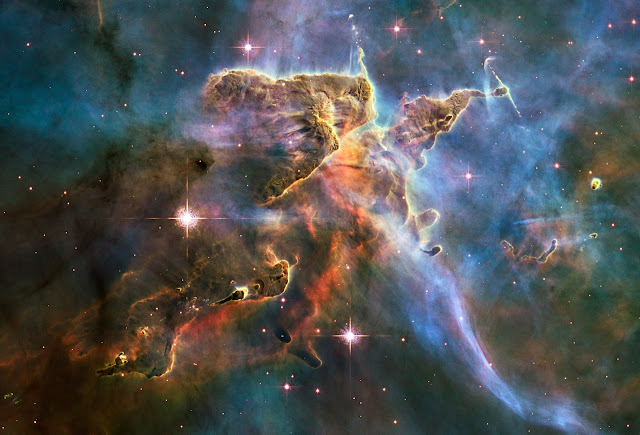The NASA/ESA Hubble Space Telescope captured this billowing cloud of cold interstellar gas and dust rising from a tempestuous stellar nursery located in the Carina Nebula, 7500 light-years away in the southern constellation of Carina. This pillar of dust and gas serves as an incubator for new stars and is teeming with new star-forming activity.
Hot, young stars erode and sculpt the clouds into this fantasy landscape by sending out thick stellar winds and scorching ultraviolet radiation. The low density regions of the nebula are shredded while the denser parts resist erosion and remain as thick pillars. In the dark, cold interiors of these columns new stars continue to form.
In the process of star formation, a disc around the proto-star slowly accretes onto the star's surface. Part of the material is ejected along jets perpendicular to the accretion disc. The jets have speeds of several hundreds of miles per second. As these jets plough into the surrounding nebula, they create small, glowing patches of nebulosity, called Herbig-Haro (HH) objects.
Long streamers of gas can be seen shooting in opposite directions off the pedestal on the upper right-hand side of the image. Another pair of jets is visible in a peak near the top-centre of the image. These jets (known as HH 901 and HH 902, respectively) are common signatures of the births of new stars.
Image Credit: NASA, ESA, and M. Livio, the Hubble Heritage Team
Explanation from: http://www.spacetelescope.org/images/heic1007e/




No comments:
Add your comment